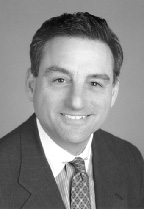At the Spring CRE Convention in Chicago on April 13-15, Richard Conklin of Pro Logis and Dan Reynolds of LaSalle Investment Management gave overviews of the global supply chain and distribution. Conklin started his presentation with the 2006 drivers as follows:
* Containers have grown 10.7% annually in the last decade. The top 15 container ports include the U.S. west coast, China ports, Dubai and northern Europe.
* In the U.S. growth with foreign trade has exceeded the U.S. GDP.
* There is a forecast of 70% growth in TEU's from 2006-15 and from a total of 382 to 647 TEU's.
* ProLogis is building a 6 story warehouse in Japan and its been a great industrial market for ProLogis.
Growth Drivers: Functional Obsolescence
Conklin stated that China's average development cost is $70 per s/f and rent will grown even if space growth does not.
They use 50-year ground leases in China and no one owns land in China except the Chinese government. What happens when the 50 years expire? No one is being serious about the future risk reality. The U.S. does not have the same high growth market. The only places in the U.S. with industrial rent growth include N. California, S. California, N.J. and parts of Florida.
Last year in 2007 ProLogis had more development in Europe and China than in the U.S. Since 2004 to the 3Q of '07, Asia owned assets for ProLogis has increased 346%. Their investment holding period is 3 years. Japan has unbelievable land constraints and is a very environmental sensitive country because it is an island. China in 24 months building a 36 kilometer bridge in Shanghai which is unique and quick. They built the bridge right over the Yellow Sea; you can't do that in the U.S. South Korea has more land constraints than Japan with water and hill boundaries.
China's retail sales are growing by 20% annually. Europe is getting 20 times investment growth and they are demolishing factories and constructing shopping centers. The U.S. does not have the same growth as Asia or Mexico.
Mexico's cap rates have gone from 10% to 8% but the capital markets in the U.S. has diminished since August, 2007. Raising capital today is difficult. The life insurance companies are helpful but bank financing is tough. Properties are losing value because cap rates are increasing and debt is not available. The remainder of '08 will not be good. Hedge funds are being formed to buy at vulture prices and pounce on a weak U.S. market. Values cannot get better until investors aren't seeking weak markets. But 2009 could be a magical year.
Cap rates are scary and the currency exchange has run its course. Richard thinks the next 2 years however could be the greatest opportunity to make a "killing" in real estate.
Reynolds then discussed raising capital with these comments.
* It has been minimal in the U.S. but there is a lot more financing overseas. He will only raise $750 million in 2008 because there are limited opportunities globally to invest money. In 2007, he raised $315 million for Asia and closed in 60 days and was double oversubscribed. It showed the appetite for Asia.
* He has to tell clients that the $250 million that they want to invest will only be $150 million actually used. There are ample investors for Asia but not enough opportunities to fill the capital raised. They cut back on raising investor capital.
* Mexico is a growing market with a growing middle-income class. The population growth is driving the need for housing and office space. There is ample global liquidity and people want to invest in Asia but not in N. America.
* Risk is been more difficult to understand. People are geographically diverse which is good with risk but when things go bad it is difficult to understand why when you have tranches with thousands of properties within each tranch.
* Real estate fundamentals are terrific; although perhaps not with owning a condo in Florida but globally real estate is very strong and there is a lot of cash wanting to be invested.
* There is a premium to be "had" if you have patience. Commercial debt is not a big problem with commercial loans just a problem selling off the loans. There is more discipline with underwriting loans in commercial real estate today than in 1989 with the 1986 Tax Reform.
* The fed cuts are keeping a lid on cap rates to a great degree but can it keep up in the next 24-60 months, he is not sure.
Robert Nahigian, FRICS, SIOR, CRE is the 2008 chapter president, and is the president of Auburndale Realty Co., Newton, Mass.
Tags:









